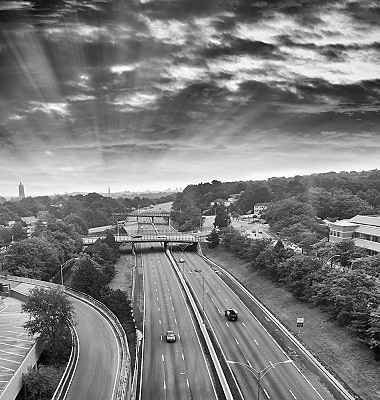On the Development of Communities

A waterway connects scattered communities, allowing them to eventually join up and become larger settlements. In Colonial America, Smith noted, “the plantations have constantly followed either the seacost of the banks of the navigable rivers, and be scarce anywhere extended themselves to any considerable distance from both.”
[A]s a rule, new localities arise ‘unintentionally.’ … The first farmers who take possession of a territory, the first craftsman who settles in their midst, have as a rule their individual interest in view. Likewise, the first innkeeper, the first shopkeeper, the first teacher, etc. With the increasing needs of the members of the society still other economic subjects find it advantageous to enter new professions in the gradually growing community or to practice the old ones in a more comprehensive way. Thus, there gradually comes into being an economic organization which is to a high degree of benefit to the interest of the members of the community.
Comments
Thank you to the author for this interesting reflection on the location and development of communities! Thinking about my own landlocked town--the downtown of which is eerily similar to the basic pattern you describe in the second to last full paragraph--and how its location was made possible only by the technology of the railroad and later the automobile (as well as its strategic location on an interstate), I wonder, might future innovations in transportation continue to render geography less and less (absolutely) important in the placement and success of communities? A successful "skyway" of flying cars, for instance, could make interstate real estate less important. But then, on the flip side, a new system of Hyperloops or mag-lev trains or whatever is going to create new desirable locations back here on the ground (around stations, stops etc., just like the rail road). No final answers here, but both Smiths speaking above deserve credit for sparking an interesting series of reflections on what gets communities going!
Thank you. Having lived most of my life in the shadow of the National Road, I've always been fascinated by its role in the development of Middle America, and by extension, the living community. It's been fascinating to see how communities adapt to newer forms of transportation and living, re-use areas built for a previous form of living. While the main shopping area might have moved from an old downtown to a strip stretching to the interstate, the old downtown has been revitalized as a home of independent shops, coffee shops, art galleries, apartments and the ubiquitous antique stores. We benefit from the ease of trade and exchange that community provided a century ago, and continue to benefit today as our communities evolve. Like you, I'm fascinated to see how future transportation modes affect living, trade and exchange, and as a result, how we adapt.
Andrew--That's all also a list of good reasons to be cautious about public transportation projects that can't change and flex as the cities they serve change and flex. Just because right now neighborhood X is the place where the bars and restaurants are doesn't mean that it always will be. And transport programs that don't allow for that kind of change are probably doomed to be disasters.